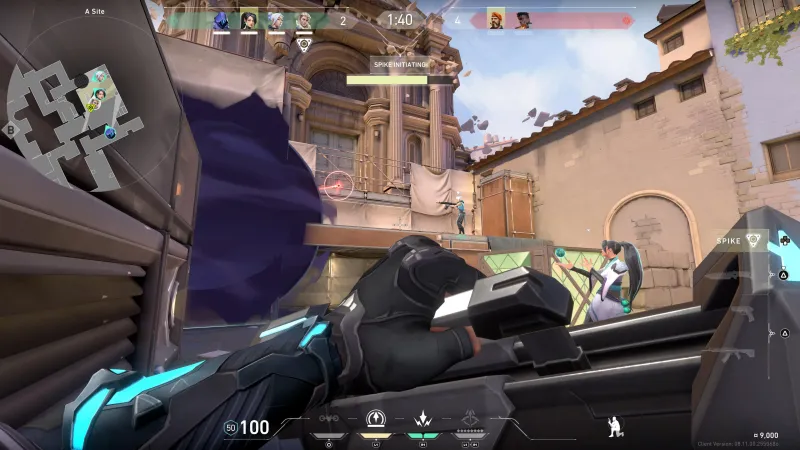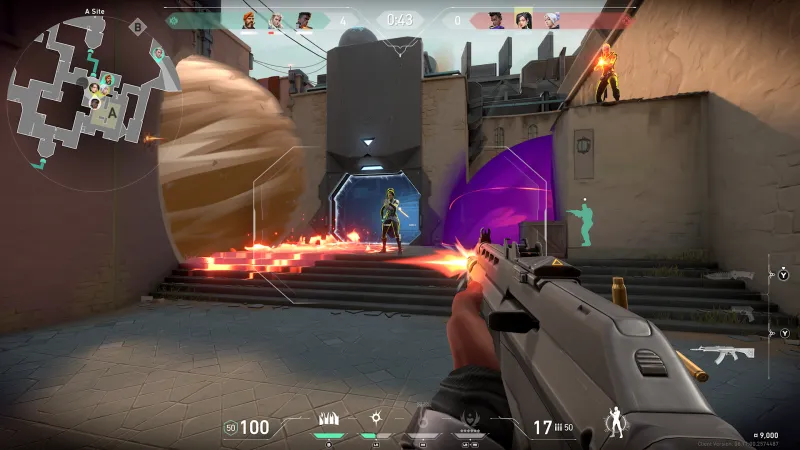During the 2024 Summer Game Fest showcase, Riot Games announced that its popular free-to-play hero shooter, Valorant, will be coming to consoles sometime this year. Earlier this week, I had a chance to visit Riot Games, where I not only played its upcoming 2D fighting game set in the League of Legends universe, 2XKO, but also learned all about Valorant for consoles and even got my hands on the upcoming Xbox Series X version.
When creating the console version of Valorant, Riot Games relied on one of the mantras that fueled its PC version: “Creativity Meets Clutch.” This means the studio wants to retain the kind of experience where the game has a strong tactical foundation that caters to the competitive crowd. In speaking with production director Arnar Gylfason, he tells me that even as the team opens the game up to new demographics through the console release, the more dedicated and competitive crowds will always be Riot’s main priority with Valorant.

Through the transition to consoles, Valorant will retain the same anti-cheat and network performance found on the PC version, and Riot Games has renewed its commitment to growing with the players. Riot says it has no end date in mind for Valorant, so it will continue to add content for as long as the player base craves it.
On consoles, Valorant will deliver the same wide-ranging customization and cadence of updates players have grown accustomed to on the PC version, but Riot insists it is not a straight port. However, despite PC having several years of a headstart, Riot says there is no flagship platform for Valorant, and players can enjoy cross-progression. This means that no matter where you play, your money, unlocks, loadouts, and more carry over from platform to platform. Valorant on consoles also has crossplay, but only with the other consoles; PC players can only play with other PC players to maintain competitive integrity since mouse and keyboard controls grant various advantages, particularly with first-person shooters.
I enjoyed the smooth controls on Xbox Series X. The development team has done an excellent job translating the controls from mouse and keyboard to gamepad, which Riot admits was one of the biggest hurdles in bringing its hero shooter to consoles.

“That was the big question to solve for on bringing the game to a console audience: How do we allow you the same range of control that you are used to on a PC from a keyboard and mouse to a controller?” Gylfason says. “With a controller, you just don’t have the same input variability, and so we had to solve that for the console player. Our approach to solving that is what we call Focus Mode. So, when you’re hip-firing and moving and shooting normally, you want to have your sensitivity way up so that you’re very quickly looking around, scoping around, and understanding your environment. And then, when you engage Focus Mode, which is engaging your left trigger, have your sensitivity significantly lower so that you can fine-tune that aim and hit that headshot that you wanted or take that engagement that you wanted to take. While you don’t have the same scale of variability as you have on PC, you at least have some scale of variability.”
Focus Mode feels good in action, and since the last time I played Valorant was around its 2020 launch, it’s great to see how much additional content has been added to the game since then. Alternating between the tactical Swiftplay mode and the all-out fun Team Deathmatch for my hours of hands-on time, I had an absolute blast. Since I’m much more of a console gamer than a PC gamer, I’m excited to dive into the Valorant competition in earnest when it finally comes out sometime later this year.
